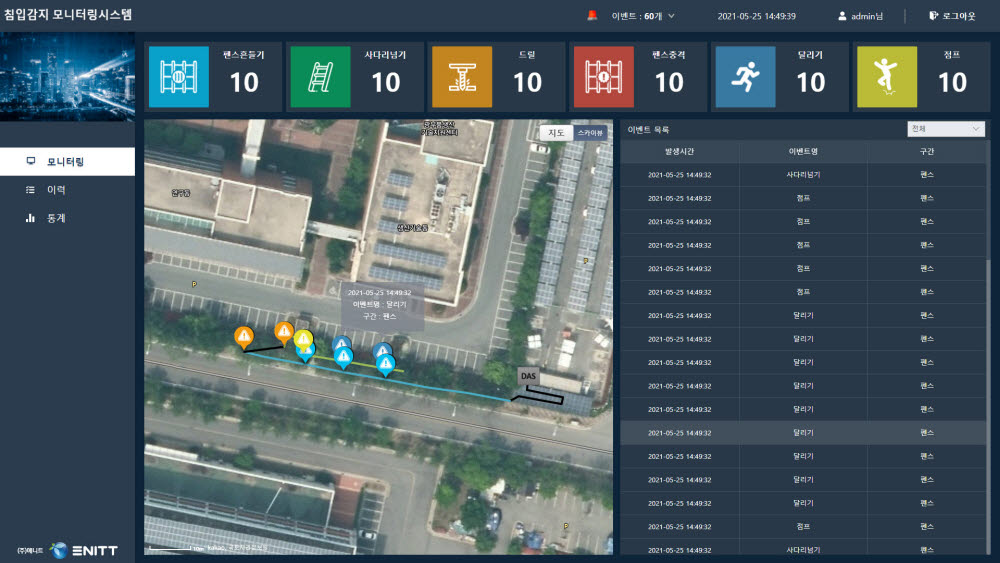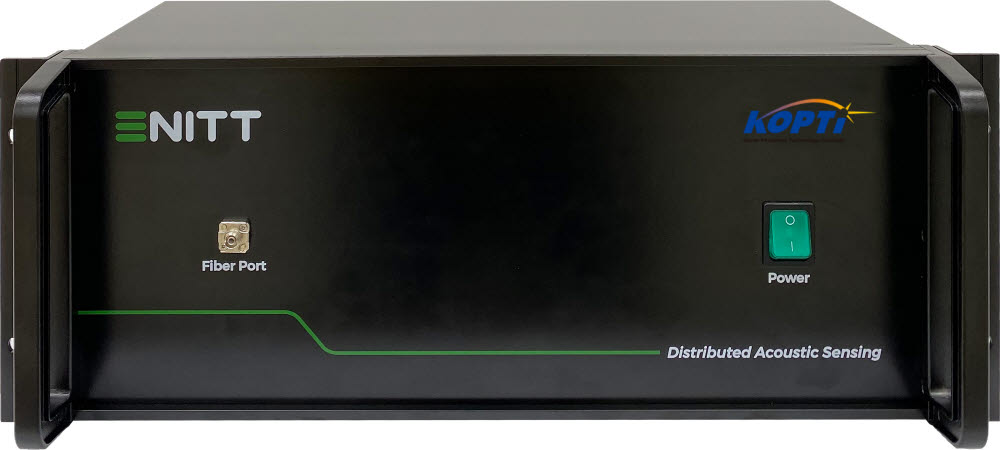NEWS
Writer : enitt
Date : 2022-04-12 17:17:46
Hits : 1576
A domestic industrial and academic research team has developed a system that can monitor a wide range of tens of kilometers by combining optical sensors and artificial intelligence (AI) technology.
Korea Optical Research Institute (Director Shin Yong-jin) announced on the 20th that it has succeeded in localizing optical sensor systems that can be used in major security facilities in the country by combining optical sensor with software company ENITT (CEO Ki Song-do).
The existing security closed circuit (CCTV) or infrared video system has a narrow monitoring range due to blind spots or low resolution and must be watched by regular monitoring personnel. Electromagnetic wave sensors and piezoelectric sensors have a problem in that it is difficult to analyze information on intruders, and the false alarm rate due to wind or fallen leaves is high.


The optical sensor system jointly developed by the Korea Optical Institute's Optical Precision Measurement Research Center (Director Kim Myung-jin) and ENITT can install optical fibers on the boundary network to accurately collect abnormal signals that change due to surrounding vibrations in real time. After creating a three-dimensional (D) distribution map of abnormal signal information, a deep learning learning algorithm can be applied to obtain intrusion and location. In addition to identifying the intruder, it is possible to determine the direction, speed, and scale of the intrusion, and alert monitoring is possible over a wide range of tens of kilometers.
Since the optical cable acts as a sensor and a signal line at the same time, it is easy to install and maintain, and power consumption for sensor operation can be minimized. Underground burial makes it difficult for intruders to neutralize the alert monitoring network in advance, and can significantly reduce malfunctions or false alarms caused by external environments such as wind and fallen leaves. It is expected to be widely used for unmanned surveillance of national security facilities such as nuclear power plants, ports, airports, and military facilities, as well as external surveillance of important private assets such as pipelines, heat pipes, gas pipes and data transmission cables.
"The localization of AI-based boundary monitoring optical sensor systems is meaningful in that it has narrowed the technology gap with advanced countries and secured a bridgehead for entering overseas markets," said Kim Myung-jin, head of the center.
Gwangju = Reporter Kim Han-sik hskim@etnews.com
https://m.etnews.com/20210618000065